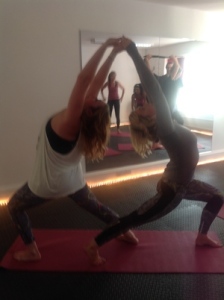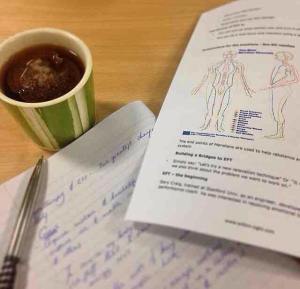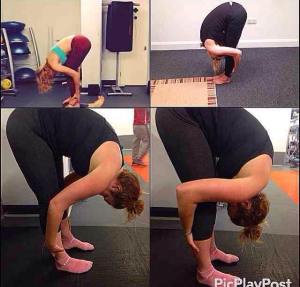A poll completed by over 1000 students on The Student Room this week asked whether young people would continue to eat red or processed meat or change their habits. Over 60% said they would still eat red and processed meat compared to only 25% claiming that they would cut down. Staggeringly a third voted ‘I don’t care, everything gives you cancer these days’. The generation who have grown up with more food choices and more access to information than any other felt totally indifferent to the advice published by the World Health Organisation (WHO).
So why are people resisting changing their lifestyle or food habits and why hasn’t this global advisory had more impact? If we consider the psychology behind resistance and the emotions that power our food choices it’s clear that threat of cancer isn’t going to work.
The psychology of resistance
As human beings we oppose anything which attacks a belief we hold. Beliefs are glued in place by the emotions we attach to that particular thing. Diet and lifestyle choices have huge emotional ties. If I think back to the times when I used to eat meat I have very fond memories of weekly family roast dinners, eating bacon sarnies in my pyjamas at a sleepover, being all wrapped up eating a hot dog loaded with caramelized onions on bonfire night and going out for brunch with my best friends. Many of us actually connect food with happy and sociable times, and it’s questionable as to whether this is really about the food at all. If you think about those happy times that are directly related to eating meat, you’re going to feel good and that is the positive emotion that is going to glue the habit of eating meat in place. It’s impossible to actually evoke a change in feeling because why would you would you want to feel any different – in your mind, right now, this isn’t actually a problem.
Similarly, we all from time to time, will eat food to comfort us and make ourselves feel better, the biscuits, the chocolate, the cheeseburger all become the soothing hug we need when we feel lonely, sad, unloved or miserable. When we indulge it makes us feel a little better because we get huge flood of the neurotransmitter dopamine which reinforces and encourages us to indulge in the thing that makes us feel good. So even though our logical mind may remind us that certain foods should perhaps be avoided, this becomes a tricky battle when our brain reminds us how much better we’ll feel if we eat the food anyway.
When the WHO published logical statements around the risks of eating meat and the connection with bowel cancer it was always hugely unlikely to make a big impact on people’s lifestyle choices because our patterns of behaviour are all held in our subconscious mind. This is where our beliefs are stored, which then powers our perceptions of the world. To change the way we eat, or think about eating, we have to do it at an emotional level.
Why diets don’t work
 Most of us at some point in our lives have tried some kind of diet plan. Think back to that time, did it actually work? If it didn’t work, that’s ok, it’s likely the the majority of us struggle to stay true to a diet plan. When considering the how the brain functions it’s easy to see why sticking to a can be difficult.
Most of us at some point in our lives have tried some kind of diet plan. Think back to that time, did it actually work? If it didn’t work, that’s ok, it’s likely the the majority of us struggle to stay true to a diet plan. When considering the how the brain functions it’s easy to see why sticking to a can be difficult.
Diet plans are structured around the restriction of certain food groups, types of food or restricting calories. What they don’t take into account is how we feel about food, the way we live our lives or the emotions we hold about those types of food.
Unconsciously the feelings that we have about food will drive our cravings. All of us will have a go-to food which brings us comfort and this powers us to act on that craving. This means that if we want to stop craving or desiring that particular food we have to change how we feel about the food.
So is our love of certain foods stronger than our fear of chronic disease?
When you consider the way our brain functions it feels like a the most appropriate answer is yes. If this wasn’t the case the world would have stopped smoking for fear of lung cancer a long time ago. Our brains are genetically wired to continue to repeat activities that bring us pleasure and food makes us feel good. Although consciously we know certain their are risks attached to both smoking and eating certain foods over a long and sustained period of time our conscious mind will always become hijacked by our unconscious desires.
So if I want to change the way I eat what do I do?
- Reflect on your food habits, try to understand why you desire certain foods and why.
- Think about what’s happening in your life when you desire them, are you sad, stressed or lonely?
- Consider how you feel when you act on your craving or desire and choose to eat them.
By learning about the emotions and feelings you attach to food will start to help you unravel your habit. Also think about what is holding those habits in place and what is stopping you from making a change.
- Do you fear missing out on something?
- Fear of not being invited for dinner
- Fear of people judging your new choices.
- Do you feel like some of your food choices define who you are. For example are you known for making the best burgers or the best fry up? If you stop doing this how will that make you feel about yourself and what will fill the gap?
By understanding what fuels any habit we begin to empower ourselves to make a change at both an unconscious and conscious level. We begin to really get to know ourselves and can begin to build a solid foundation for creating the new habits that we desire.
I hope you’ve found this post interesting and if you have any questions at all just post me a comment.
Have a lovely weekend,
Hx


